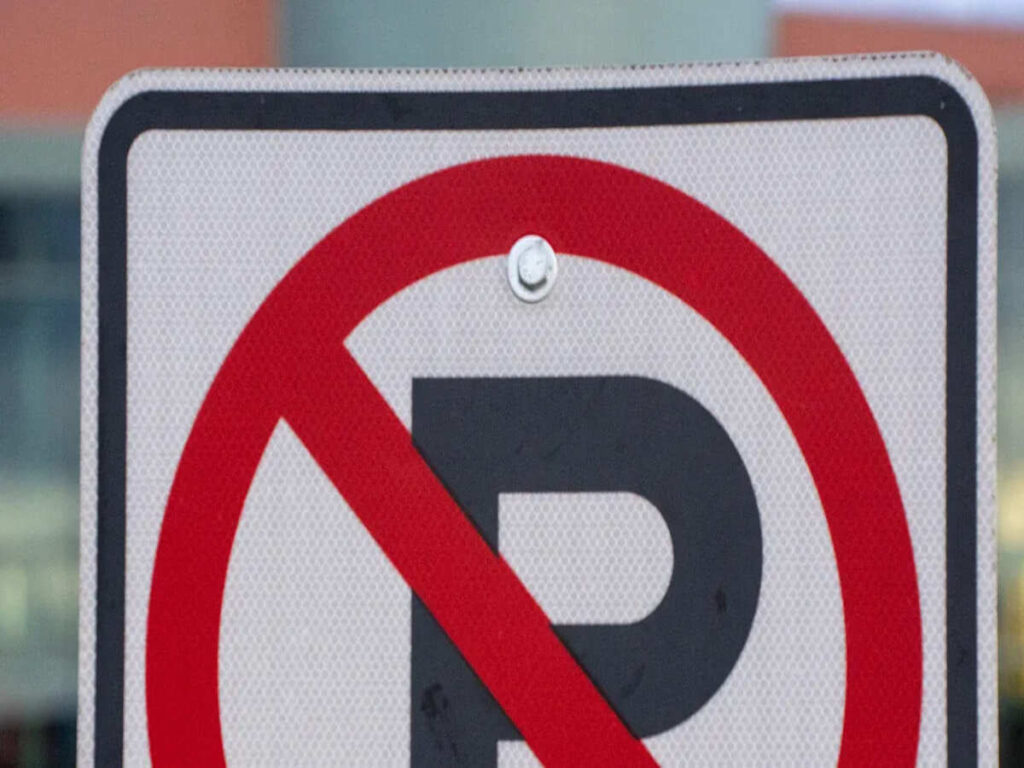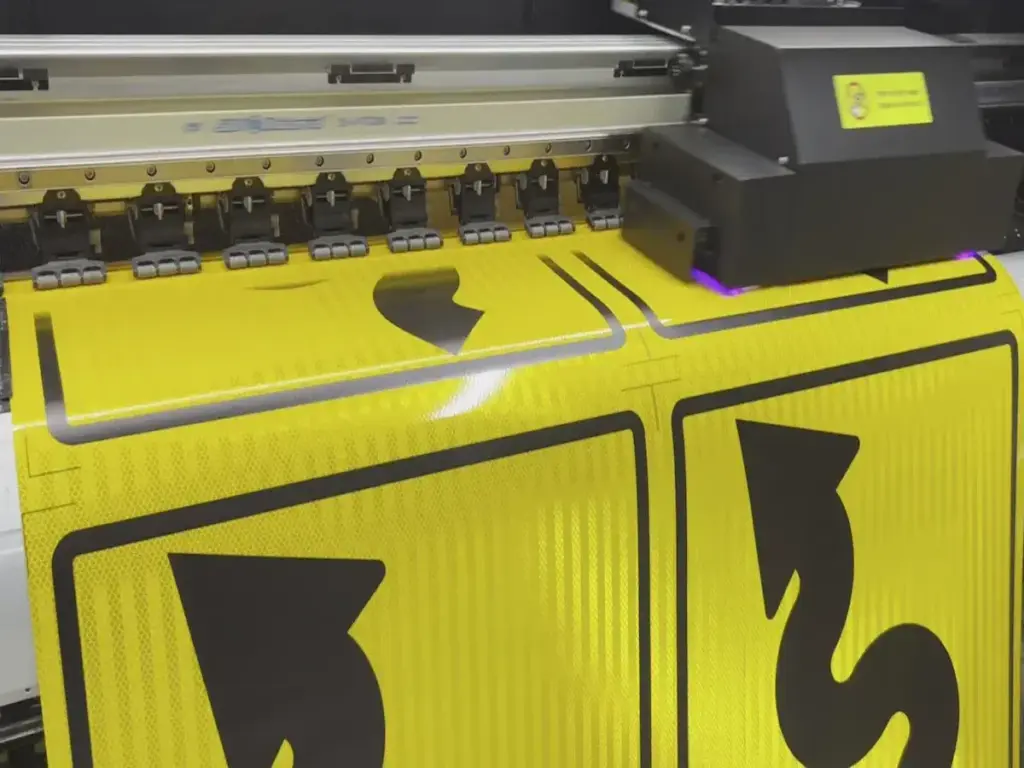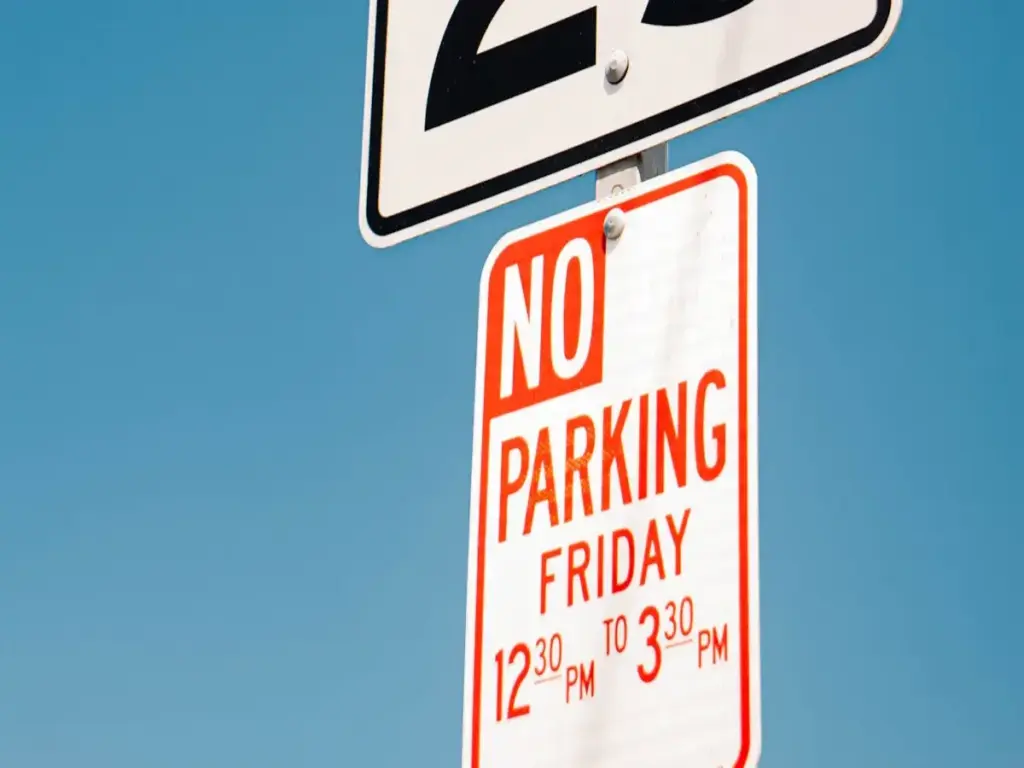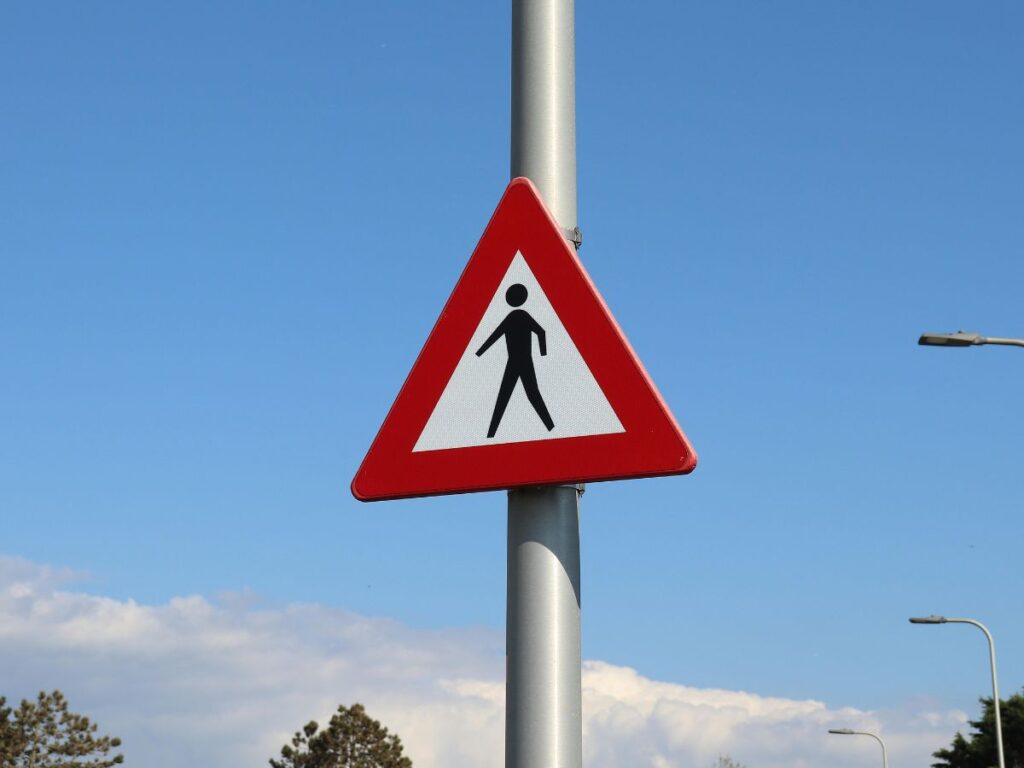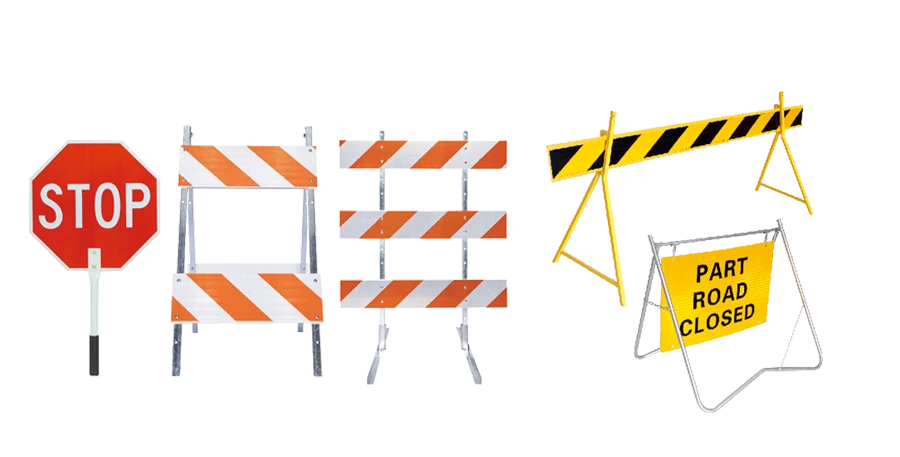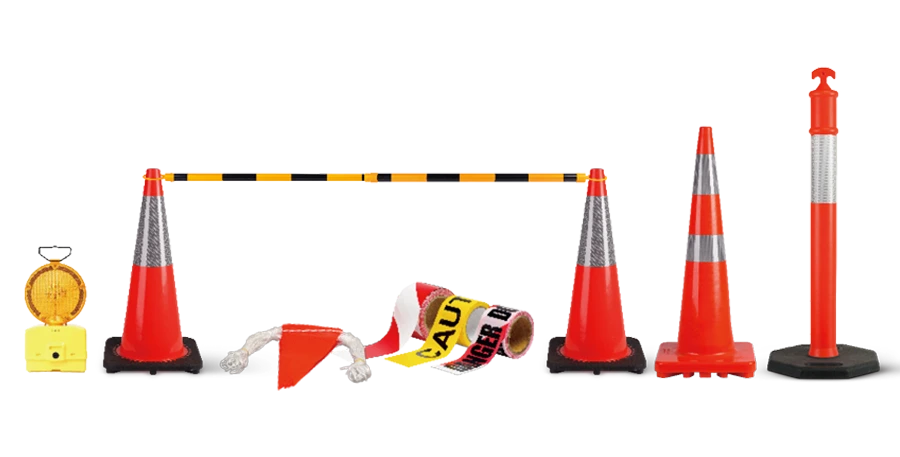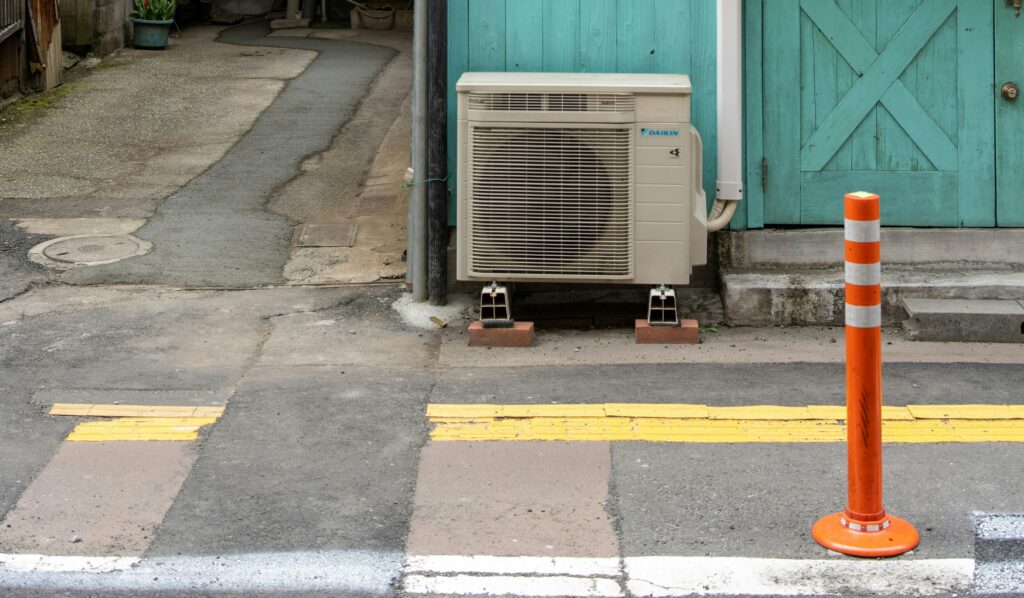
Les délimitants de la circulation jouent un rôle essentiel pour assurer la sécurité et l'organisation des routes. Leurs propriétés réfléchissantes améliorent la visibilité, surtout la nuit ou sur des routes à grande vitesse. Les conducteurs peuvent anticiper des virages ou des obstacles nets plus tôt, réduction des accidents. L'espacement approprié garantit que les délimitateurs fournissent des conseils continus le long de la chaussée. Cela aide les conducteurs à interpréter les conditions de la route et à rester sur le parcours. Une application efficace de délimitation influence également le comportement du conducteur, Rendre les routes plus sûres pour tout le monde. En comprenant les facteurs qui affectent l'espacement, Vous pouvez optimiser les délimiteurs de voie pour une sécurité et une efficacité maximales.
Pour une solution fiable, Signes OPT Offre des délimitateurs de trafic hautes performances, Conçu avec des matériaux avancés pour une visibilité et une durabilité améliorées. OpTsignens's DILINEAURS sont construits pour résister aux conditions météorologiques difficiles et à un volume de trafic élevé, Assurer une efficacité durable dans les environnements urbains et ruraux
Principaux à retenir
- L'espacement correct des marqueurs de circulation rend les routes plus sûres. Il aide les conducteurs à mieux voir et à rester sur la bonne voie, Même sous la pluie ou la nuit.
- Les règles suivantes pour l'espacement des marqueurs sont très importantes. Utilisez les directives de la Federal Highway Administration pour rester en sécurité et suivre la loi.
- Vérifiez attentivement la route et la circulation pour décider de l'espacement des marqueurs. Regardez comment la route est utilisée pour trouver la meilleure configuration.
- Changer l'espacement des marqueurs si le temps est mauvais. Dans le brouillard ou la neige, Le rapprochement des marqueurs aide les conducteurs à voir et à rester en sécurité.
- Continuez à vérifier et à mettre à jour le placement des marqueurs en tant que routes et changements de circulation. Cela continue de bien fonctionner et en sécurité pour tout le monde.
Pourquoi l'espacement approprié des délimiteurs de voie est importante

Amélioration de la sécurité routière
L'espacement approprié des délimitateurs joue un rôle essentiel dans l'amélioration de la sécurité routière. Lorsqu'il est placé correctement, Les délimiteurs améliorent la visibilité et le guide pour le trafic venant en sens inverse, Surtout dans des conditions difficiles comme la pluie ou l'obscurité. Des études montrent que les dispositifs rétroréflectifs et les avertissements sur les délimiteurs augmentent considérablement la sensibilisation au conducteur. Cela réduit la probabilité d'accidents. Par exemple, des intervalles d'espacement allant de 25 à 200 Il a été démontré que les pieds maintiennent la visibilité et fournissent des conseils continus. Sur les courbes ou les pentes, Un espacement plus proche garantit que les conducteurs peuvent anticiper les changements dans la route à venir. En optimisant l'application de délimitation, Vous créez un environnement de conduite plus sûr pour tout le monde.
Améliorer le flux de trafic et l'organisation
Les délimitants bien espacés aident à organiser le trafic et à prévenir la confusion. Ils fournissent un guide clair pour le trafic venant en sens inverse, Assurer que les véhicules restent dans leurs voies désignées. Ceci est particulièrement important dans les zones à grande vitesse ou pendant les heures de pointe. Sur les autoroutes, Espacement des délimitants à intervalles de 20 à 30 mètres assure un flux de trafic en douceur. Dans les zones urbaines, Espacement plus court de 10 à 20 Les mètres accueillent des vitesses plus lentes et des arrêts fréquents. Les délimitants correctement placés réduisent également goulot d'étranglement et améliorer l'efficacité du trafic global. En maintenant un espacement cohérent, Vous aidez les conducteurs à naviguer sur la route avec confiance.
Assurer la conformité aux normes réglementaires
Il est essentiel d'adhérer aux normes réglementaires pour l'espacement des délits. Aux États-Unis, Les directives spécifient l'espacement minimum et maximum en fonction des conditions routières. Par exemple, le Administration des routes fédérales recommande un espacement minimum de 20 pieds et un maximum de 300 pieds sur les courbes. Une formule commune, S = 3√r-50, calcule l'espacement des courbes, Assurer la sécurité et la conformité. Le premier délimiteur sur une courbe doit être placé à 2s, suivi par le deuxième à 3s, Et le troisième à 6s. En suivant ces normes, Vous vous assurez que votre placement de délimiteur répond aux exigences légales et améliore la sécurité routière.
Facteurs influençant le placement et l'espacement des délits
Type de route et conditions
Autoroutes vs. Routes urbaines
Le type de route a un impact significatif sur la façon dont vous placez les délimitants. Les autoroutes nécessitent souvent des délimitants postaux pour marquer les bords des voies et guider les conducteurs à travers des changements d'alignement. Ceux-ci sont particulièrement utiles sur les longs étirements ou les zones avec des courbes. En milieu urbain, Les délireurs de montage fonctionnent bien en raison de leur polyvalence. Vous pouvez les utiliser à des intersections ou des virages nets où la visibilité est cruciale. Les délimitants flexibles sont idéaux pour les zones à fort trafic, car ils résistent au contact du véhicule et réduisent les besoins de remplacement. Les délimitateurs de mur de barrière améliorent la visibilité sur les barrières en béton, Les rendre adaptés aux zones de construction ou aux diviseurs médians. En sélectionnant le bon type, Vous vous assurez que les délimitateurs répondent aux besoins spécifiques de la chaussée.
Courbes, Pentes, et les défis de la visibilité
Courbes et pentes Présenter des défis uniques pour le placement des délits. Sur les courbes pointues, L'espacement plus proche garantit que les conducteurs peuvent anticiper les changements dans la chaussée. Les pentes peuvent nécessiter des délimitants supplémentaires pour maintenir la visibilité, surtout par temps défavorable. Vous devriez également considérer les défis de visibilité comme les angles morts ou les obstructions. L'ajustement de l'espacement dans ces zones aide les conducteurs à rester sur le cap et à réduire le risque d'accidents.
Vitesse et volume de la circulation
Routes à grande vitesse
Routes à grande vitesse exiger un espacement des délimiteurs précis. À des vitesses plus élevées, Les conducteurs ont besoin de plus de temps pour réagir aux changements. La mise en place de délimitants plus près améliore la visibilité et fournit des conseils continus. Par exemple, sur les routes avec des vitesses dépassant 60 mph, intervalles d'espacement de 15-20 Les compteurs sont souvent recommandés. Cela garantit que les conducteurs peuvent naviguer en toute sécurité sur la chaussée.
Zones à basse vitesse ou congestionnées
Dans les zones à basse vitesse ou congestionnées, vous pouvez espacer les délimitants plus loin. Les routes urbaines avec des arrêts fréquents ou un trafic plus lent bénéficient d'intervalles d'espacement de 10-20 mètres. Cette configuration peut accueillir la vitesse réduite tout en conservant des conseils de voie claire. L'espacement approprié dans ces zones empêche la confusion et maintient le trafic organisé.
Considérations environnementales et météorologiques
Visibilité nocturne
Conduite nocturne nécessite une attention particulière au placement des délits. Les matériaux réfléchissants sur les délimiteurs améliorent la visibilité dans des conditions de faible luminosité. Vous devez les espacer plus près dans les zones avec un éclairage limité pour vous assurer que les conducteurs peuvent voir clairement la chaussée. Cette approche minimise le risque d'accidents pendant les voyages nocturnes.
S'adapter à la neige, Pluie, ou brouillard
Conditions météorologiques comme la neige, pluie, ou le brouillard peut réduire la visibilité et rendre la conduite dangereuse. Dans ces situations, Vous devez ajuster l'espacement des délits pour améliorer les conseils. Par exemple, L'espacement plus serré dans les zones brumeuses aide les conducteurs à rester dans leurs voies. Sur les routes enneigées, Les délimitants avec une réflectivité plus élevée s'assurer qu'ils restent visibles malgré les conditions difficiles.
Lignes directrices et normes réglementaires
Règlements fédéraux et étatiques
Les réglementations fédérales et étatiques fournissent des lignes directrices claires pour placer des délimitants. Ces règles garantissent la cohérence et la sécurité à travers différents types de routes. Vous devez toujours vous référer à ces normes lors de la planification de l'espacement des délits. Par exemple, le Administration des routes fédérales (Fhwa) Recommande des intervalles d'espacement spécifiques en fonction du type de section routière. Le tableau ci-dessous décrit certaines directives couramment référencées:
| Règlement | Lignes directrices d'espacement |
|---|---|
| Sections tangentes principales | 200 à pied |
| Sections tangentes de rampe | 100 à pied |
| Autres options | Un espacement régulier plus proche peut être utilisé |
Sur les sections tangentes principales, Espacement des délimitateurs de trafic plastique 200 Les pieds à pied offrent une visibilité adéquate aux conducteurs. Pour les sections tangentes de rampe, un espacement plus proche de 100 Les pieds assure de meilleurs conseils lors des changements de voie. Dans les zones avec des défis uniques, Vous pouvez utiliser un espacement encore plus serré pour améliorer la sécurité. En suivant ces règlements, Vous aidez à maintenir une expérience de conduite cohérente et prévisible.
Meilleures pratiques de l'industrie
En plus des règles fédérales et étatiques, Les meilleures pratiques de l'industrie offrent des informations précieuses pour le placement des délits. Ces pratiques relèvent souvent des défis du monde réel que les réglementations peuvent ne pas couvrir entièrement. Par exemple, Vous devriez considérer les besoins spécifiques de la chaussée, comme les courbes, pentes, ou intersections. Sur les courbes pointues, Un espacement plus proche améliore la visibilité et aide les conducteurs à naviguer en toute sécurité. Dans les zones de construction, tighter spacing reduces confusion and highlights potential hazards.
Traffic engineers often recommend conducting site surveys to identify unique conditions. This allows you to adjust spacing based on factors like traffic speed, volume, et les conditions environnementales. Using reflective materials on delineators enhances visibility, surtout la nuit ou par temps défavorable. By combining regulatory standards with industry best practices, you can create a safer and more efficient road system.
Steps to Determine the Right Spacing for Delineator Placement
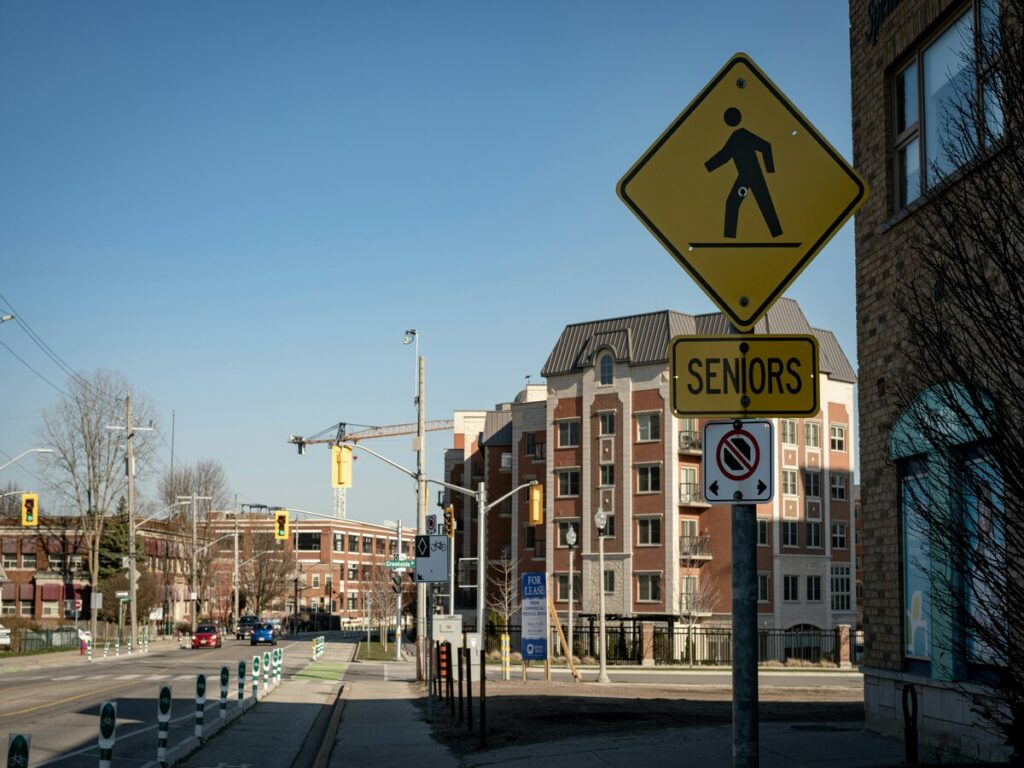
Assess Road and Traffic Conditions
Conducting a Site Survey
Before placing plastic traffic delineators, you should conduct a thorough site survey. This step helps you understand the road layout, modèles de trafic, and potential challenges. Focus on key driving tasks such as locating bends, determining curve speed, and assessing roadway conditions. Le tableau ci-dessous décrit les segments et tâches essentiels impliqués dans ce processus:
| Segment | Tâches de conduite clés |
|---|---|
| 1. Approche | Localiser le virage, Déterminer la vitesse de la courbe, Maintenir une vitesse de croisière, Maintenir la position de la voie, Évaluer les conditions routières |
| 2. Découverte de courbe | Déterminer la courbure, Évaluer les conditions routières, Faire des ajustements de vitesse, Ajuster le chemin d'accès pour l'entrée de la courbe |
| 3. Entrée et négociation | Ajustez la vitesse en fonction de la courbure / de l'accélération latérale, Ajuster la trajectoire, Maintenir une position de voie sûre, Évaluer les conditions routières |
| 4. Sortie | Atteindre la vitesse de croisière prévue, Maintenir la position de la voie, Évaluer les conditions routières |
Cette enquête garantit que les délimiteurs sont placés à une distance constante du bord de la chaussée, Améliorer la visibilité et la sécurité.
Identifier les dangers potentiels
Identifier les dangers tels que les courbes pointues, pentes raides, ou intersections. Ces zones nécessitent souvent un espacement plus proche des délimitateurs pour guider efficacement les conducteurs. Par exemple, sur les courbes, L'espacement plus serré garantit que les conducteurs peuvent anticiper les changements dans la route. En abordant ces dangers, Vous améliorez l'efficacité de l'application de délimitation.
Consulter les directives pertinentes
Administration des routes fédérales (Fhwa) Lignes directrices
Le Fhwa Fournit des directives claires pour le placement des délits. Sur des sections tangentes de rampe, Les délimitateurs de trafic en plastique doivent être espacés 100 à pied. Pour les sections tangentes principales, L'espacement devrait aller de 200 à 530 pieds. Ajustez l'espacement des approches des courbes horizontales pour s'assurer que les conducteurs peuvent voir plusieurs délimiteurs à la fois. Suivre ces directives assure la conformité et améliore la sécurité routière.
Règlements locaux et étatiques
Les réglementations locales et étatiques complètent souvent les directives fédérales. Ces règles peuvent relever les défis régionaux uniques, comme les conditions météorologiques ou les types de routes spécifiques. Consultez toujours ces réglementations pour garantir que votre placement de délimiteur s'aligne sur les exigences légales.
Calculer l'espacement optimal
Utilisation de formules d'espacement ou d'outils
Utilisez des formules d'espacement pour calculer la distance idéale entre les délimiteurs. Une formule commune est S = 3√R - 50, où “R.” représente le rayon de courbe. Cette formule garantit que les délimitants sont espacés de manière appropriée pour les courbes. Le tableau ci-dessous met en évidence les recommandations d'espacement clé:
| Description | Preuve |
|---|---|
| Formule pour l'espacement en fonction du rayon | S = 3√r – 50 |
| Exigence d'espacement minimum | L'espacement minimum devrait être 20 pieds |
| Espacement maximum sur les courbes | L'espacement ne doit pas dépasser 300 pieds |
Ces calculs aident à maintenir une distance constante du bord de la chaussée, Assurer des conseils cohérents.
Ajustement des scénarios uniques
Ajustez l'espacement pour tenir compte des scénarios uniques comme les zones de construction ou les conditions météorologiques défavorables. Par exemple, dans des conditions brumeuses, L'espacement plus serré améliore la visibilité. Dans les zones de construction, Le placement plus proche met en évidence les dangers et guides les conducteurs en toute sécurité. Adapter l'espacement à des conditions spécifiques garantit un placement efficace.
Tester et régler le placement
Effectuer des tests sur le terrain
Les tests sur le terrain vous permettent d'évaluer l'efficacité de votre placement de délimité dans des conditions réelles. Commencez par observer comment les conducteurs interagissent avec les délimitateurs de trafic en plastique pendant différentes périodes de la journée. Faites attention à la visibilité, surtout la nuit ou par mauvais temps. Vérifiez si les délimitateurs fournissent des conseils clairs et si leur espacement garantit un flux de trafic en douceur.
Utiliser des outils comme Roues de mesure ou des dispositifs laser pour confirmer la distance entre les délimitateurs de trafic en plastique correspond à vos calculs. Marchez le long de la chaussée pour inspecter leur alignement et assurez-vous qu'ils restent cohérents avec la courbure de la route. Si vous remarquez des lacunes dans la visibilité ou les zones où les conducteurs peuvent avoir du mal à rester sur le cap, Ajustez l'espacement en conséquence. Les tests sous différentes vitesses de trafic et volumes vous aideront à identifier les faiblesses du placement.
Rassembler les commentaires et faire des ajustements
Les commentaires des conducteurs et des usagers de la route sont inestimables pour affiner le placement des délits. Mener des enquêtes ou des entretiens pour comprendre leur expérience de navigation sur la route. Demandez si les délimitateurs de trafic en plastique étaient faciles à voir et s'ils ont fourni des conseils suffisants. Vous pouvez également collaborer avec les ingénieurs de la circulation ou les autorités locales pour rassembler des informations professionnelles.
Analyser les commentaires pour identifier les modèles ou les problèmes récurrents. Par exemple, Si les conducteurs signalent la difficulté à voir les délimitateurs de trafic en plastique sur les courbes, Envisagez de réduire la distance entre eux dans ces zones. Faire des ajustements en fonction de cette entrée et effectuer des tests sur le terrain supplémentaires pour vérifier les améliorations. Examiner et mettre à jour régulièrement le placement garantit que les délimitants restent efficaces à mesure que les conditions routières changent.
Erreurs courantes dans l'espacement des délits de voie de voie
Surpeuplement ou espacement excessif
Une erreur courante pour placer des délimitateurs est de surcharger ou de laisser des lacunes excessives entre elles. La surpopulation peut submerger les conducteurs, Rendre plus difficile de se concentrer sur la route. Lorsque les délimitateurs de voie sont trop proches, Ils peuvent créer un encombrement visuel, Surtout sur les routes droites. D'autre part, Un espacement excessif réduit leur efficacité. Les conducteurs peuvent perdre de vue le prochain délimiteur, Surtout dans les mauvaises conditions de visibilité comme le brouillard ou la pluie. Vous devez viser un espacement équilibré qui fournit des conseils clairs sans submerger le conducteur. Par exemple, sur les autoroutes, Délimineurs d'espacement 20 à 30 Les mètres l'un de l'autre assure la visibilité tout en maintenant l'ordre.
Ignorer les conditions spécifiques à la route
Une autre erreur est de ne pas considérer les conditions uniques de la route. Chaque route a des besoins spécifiques en fonction de sa disposition, modèles de trafic, et environnement. Par exemple, Les courbes pointues ou les pentes abruptes nécessitent un placement plus étroit des délimitateurs de voies pour guider efficacement les conducteurs. Ignorer ces facteurs peut conduire à des accidents, car les conducteurs peuvent ne pas avoir suffisamment d'indices visuels pour naviguer en toute sécurité. Vous devez toujours évaluer le type de route et ses défis avant de décider de l'espacement. Pour les routes urbaines avec des arrêts fréquents, L'espacement plus court fonctionne mieux. Sur les autoroutes, L'espacement plus long est plus approprié en raison de vitesses plus élevées.
Ne pas mettre à jour l'espacement en fonction des conditions changeantes
Les conditions routières et les modèles de circulation changent avec le temps. Ne pas ajuster le placement des délits pour refléter ces modifications est une erreur critique. Par exemple, Un volume de trafic accru ou de nouvelles zones de construction peuvent nécessiter un espacement plus stricte pour améliorer la sécurité. De la même manière, Les changements météorologiques comme les chutes de neige lourdes ou le brouillard peuvent exiger des ajustements pour assurer la visibilité. Examiner et mettre à jour régulièrement le placement des délits vous aide à maintenir leur efficacité. Effectuer des enquêtes périodiques sur le site et recueillir les commentaires des usagers de la route pour identifier les zones où l'espacement doit être amélioré.
Exemples du monde réel de placement efficace des délits
Espacement sur les autoroutes
Les autoroutes nécessitent un placement précis des délits pour assurer la sécurité et le flux de trafic lisse. Vous devez suivre des recommandations d'espacement spécifiques en fonction du type de section routière. Par exemple, Les sections tangentes de rampe bénéficient d'un espacement de 100 pieds entre les délimitateurs de voie. Sur les sections tangentes principales, L'espacement peut aller de 200 à 530 pieds, en fonction de la visibilité et des conditions routières. Les courbes horizontales demandent des ajustements pour maintenir la visibilité, S'assurer que les conducteurs peuvent voir des délimitateurs à plusieurs voies à la fois. Le tableau ci-dessous résume ces recommandations:
| Type de section | Recommandation d'espacement |
|---|---|
| Sections tangentes de rampe | 100 à pied |
| Tangente principale | 200 à 530 à pied |
| Courbes horizontales | Ajusté pour la visibilité |
En adhérant à ces directives, Vous pouvez optimiser l'application de délimitation sur les autoroutes, Fournir des conseils clairs aux conducteurs à grande vitesse.
Espacement dans les zones de construction
Les zones de construction présentent souvent des défis uniques, tels que les fermetures de voies et les modèles de trafic changeants. Dans ces domaines, Un espacement plus proche des délimiteurs est essentiel pour mettre en évidence les dangers et les conducteurs de guidage en toute sécurité. Vous devriez placer des délimitateurs 5 à 10 des mètres séparés, en fonction du niveau de risque. Par exemple, L'espacement plus serré fonctionne bien près des zones de travail actives ou des détours tranchants. Les matériaux réfléchissants sur les délimitants améliorent la visibilité, surtout la nuit ou par temps défavorable. L'espacement approprié dans les zones de construction réduit la confusion et assure un environnement plus sûr pour les conducteurs et les travailleurs.
Conseil: Utilisez des délimiteurs flexibles dans les zones de construction pour minimiser les dommages causés par le contact accidentel du véhicule.
Espacement dans les zones urbaines
Les routes urbaines nécessitent un espacement plus court entre les délimiteurs pour accueillir des vitesses plus lentes et des arrêts fréquents. Vous devez espacer les délimitateurs 10 à 20 des compteurs à l'écart pour fournir des conseils de voie claire. Cet espacement fonctionne bien aux intersections, virages tranchants, et des zones avec une activité piéton lourde. En milieu urbain, Les délimiteurs de montage sont particulièrement efficaces en raison de leur polyvalence. Ils peuvent être installés sur des bordures ou des obstacles pour améliorer la visibilité. Le placement approprié des délits dans les zones urbaines aide à organiser le trafic, réduit les goulots d'étranglement, et améliore la sécurité routière globale.
Note: Examiner régulièrement le placement des délits urbains pour résoudre les changements dans les modèles de trafic ou les nouveaux développements.
L'espacement approprié des délimitateurs assure des routes plus sûres et un flux de circulation plus fluide. Vous devez évaluer le type de route, vitesse de circulation, et les facteurs environnementaux pour déterminer le meilleur placement. Par exemple, Les autoroutes et les routes urbaines nécessitent différentes stratégies d'espacement pour répondre aux besoins de sécurité. En suivant les directives établies et en menant des enquêtes sur le site, Vous pouvez optimiser les délimitateurs de voie pour n'importe quel scénario. Examiner et ajuster régulièrement le placement garantit qu'ils restent efficaces à mesure que les conditions changent. Avec une approche systématique, Vous pouvez améliorer la sécurité routière et maintenir la conformité aux réglementations.
FAQ
Quel est l'espacement idéal pour les délimiteurs de voie sur les autoroutes?
L'espacement idéal sur les autoroutes va de 20 à 30 mètres. Cette distance assure une visibilité claire et un flux de trafic en douceur. Pour les courbes ou les zones avec une visibilité réduite, Vous devez réduire l'espacement pour fournir des conseils continus aux conducteurs.
Comment les conditions météorologiques affectent-elles l'espacement des délimiteurs de voie?
Temps défavorable comme le brouillard, pluie, ou la neige réduit la visibilité. Dans de telles conditions, Vous devez placer plus près des délimitants de voie. Cet ajustement aide les conducteurs à rester sur le cap et améliore la sécurité par temps difficile.
Y a-t-il des directives spécifiques pour le placement des délits dans les zones de construction?
Oui, Les zones de construction nécessitent un espacement plus serré, typiquement 5 à 10 mètres. Cette configuration met en évidence les dangers et guide les conducteurs en toute sécurité dans la zone. L'utilisation de délimitateurs de voies réfléchissants ou flexibles améliore la visibilité et minimise les dommages du contact accidentel.
Comment pouvez-vous garantir la conformité aux normes réglementaires?
Vous devriez consulter Federal, État, et les directives locales. Par exemple, le Administration des routes fédérales (Fhwa) Fournit des recommandations d'espacement pour différents types de routes. Les suites garantissent que votre placement de délimiteur répond aux exigences légales et améliore la sécurité routière.
L'espacement des délimitors de voie peut-il être ajusté après l'installation?
Oui, Vous pouvez ajuster l'espacement en fonction des commentaires ou des conditions changeantes. Effectuer des tests sur le terrain et recueillir les commentaires des conducteurs pour identifier les zones nécessitant une amélioration. Les examens réguliers garantissent que les délimiteurs de voie restent efficaces et s'adaptent à l'évolution des conditions de route et de circulation.
Conseil: Prioriser toujours la visibilité et la sécurité lors du réglage de l'espacement des délits.


